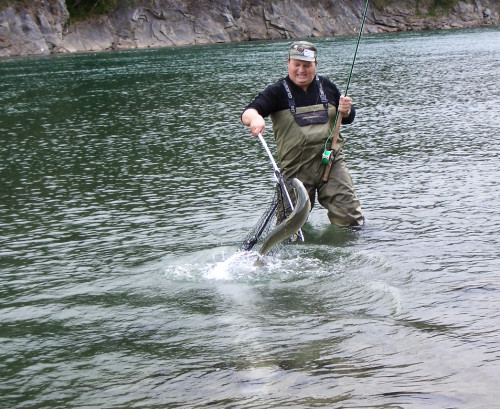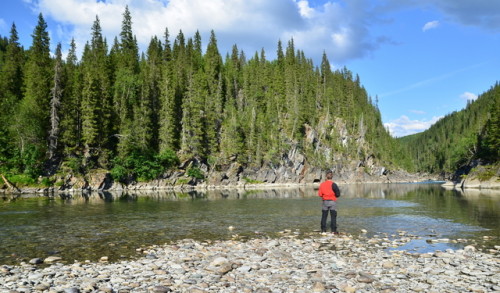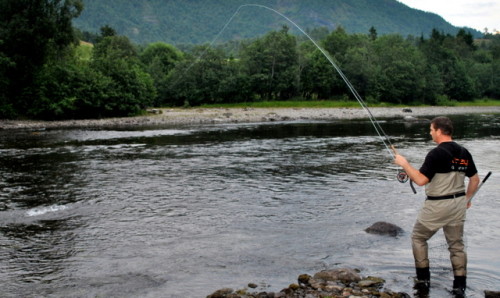Vefsna is the main watercourse running through the inland municipalities of Hattfjelldal, Grane and Vefsn. The river, which has its headwaters in the Børgefjell mountains and the mountains
near the Swedish border, runs 160 km northwest before flowing into the Vefsnfjord at Mosjøen.
Vefsna is a large river with a flow rate during the fish season of between 80 og 200 m³/sec, and up to 1000 m3/sec.
The Vefsna watercourse gained protection status in 2009, which will safeguard the great fishing and nature-based experiences this fantastic river can offer for future generations. This is also
good to know when you are standing and taking pleasure in the nature, tranquillity, purity – and the phenomenal fishing.
The Vefsna region also each have their own salmon strains. However, the salmon has experienced tough times here over the past 30 years after the salmon parasite Gyrodactylus salaris entered the river system in this area. Even though the salmon stocks are significantly reduced some salmon is caught each year in all these rivers.
A large scale treatment of all infected water courses in the Vefsna region was completed in late summer 2011 and 2012.
We look extremely forward to salmon fishing in the region picking up again and reaching the heights of old, like it was when the Vefsna was classified as Norway’s fourth best salmon fishing
river.
A large scale programme has already been commenced to ensure today’s solid sea trout strain will have the best conditions to continue also when the salmon return.
In the river Vefsna upstream from the Laksfors waterfall, the brown trout has not had competition from salmon or sea trout for 25 years. All anadromous fish have been stopped at Laksfors to prevent the spread of gyrodactilus. This has led to the brown strain developing to such a high quality that fish of well over 1 kg are not uncommon. It is also probable that fish migrate
from lakes further up the watercourse and then establishes itself in the river.
Few fishermen and long stretches of river provide undreamed of opportunities for the curious and adventurous brown trout fisherman. In the stretches of the river between Trofors and
Laksfors contain its own grayling strain. The grayling in the area are unusually large and fish above 1 kg are normal here.
The stretch from Laksfors – Trofors
The river runs relatively calmly with small sections of rapids and sand banks. There is one relatively large river waterfall, Fellingfors, which has a large deep pool. The riverbanks around
and upstream from the Finnsås Bridge in Grane and the sand banks down towards Laksfors are known as good fishing spots.
Access to the river is good as the E6 highway follows the eastern side of the river. However, most people fish from the western side of the river, parts of which can be reached by municipal
and county roads.
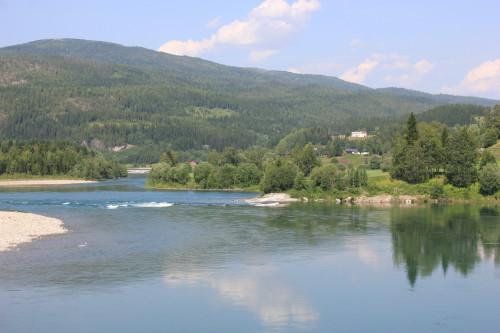
View from the bridge at Grane
Austervefsna, the stretch from Trofors – Hattfjelldal
The lower reaches of the river Austervefsna are regarded as good places for fishing brown trout, particularly around the museumsarea of Gammelsagmaro.
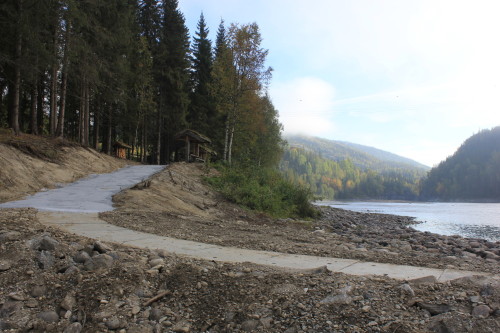
The next 10 km of the river upstream contain some waterfalls, rapids and large holes.
Brown trout can be found in every deep pool in the stretch of the river that runs alongside route Rv 73 to Hattfjelldal.
However, access to the river is difficult in places. At Kløvimoen, where the bridge crosses the river and the road to Fiplingdalen goes, the terrain is flatter and the river becomes calmer. The reaches of the river past the mouth of the large Fiplingdal River and the stretch called the Stillelva, which
runs towards Stillelvholmen, are wilderness areas and provide good chances of catching a brown trout of the larger type.
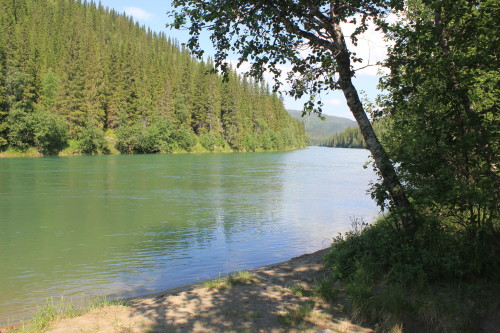
The entire stretch from here up towards Hattfjelldal can virtually be regarded as a virgin brown trout river. After the salmon disappeared from these areas, very little fishing has taken place here. A poorly maintained municipal road follows the southern
side of the river so access is alright.
Susna, the strech from Hattfjelldal – Susendal
In the river Susna and in this area it is more common to encounter anglers in search of trout. In certain parts of the river, it is possible to catch good sized trout of high quality, while in other parts of the river the fish are much smaller.
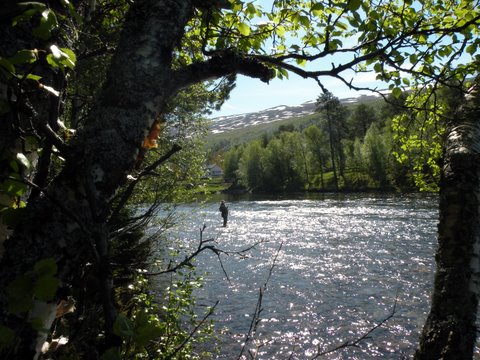
Access is good as the state highway up the Susendalen valley follows the river most of the way towards the Børgefjell mountains. This stretch covers many kilometres and runs through a
mix of cultural landscapes and wilderness.
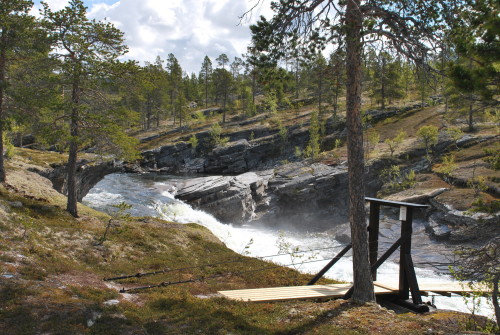
Susna ved Bergum
Svenningdal River, the stretch from Trofors – Svenningdalen
The river meets the Austervefsna at Trofors and was previously regarded as a very good river for small salmon. The river is extremely varied with perfect fly fishing stretches replaced by strong rapids, narrow deep pools, calm flat sections and large holes.
There is little fishing in the river but rumours are spreading about catches of good sized brown trout of extremely good quality. The river has kilometre after kilometre of fishable sections
and if you find where the big fish are biting, you will have found your very own undisturbed fishing paradise.
Access is fine as the E6 highway follows the eastern side of the river and municipal roads cover parts of the western side.
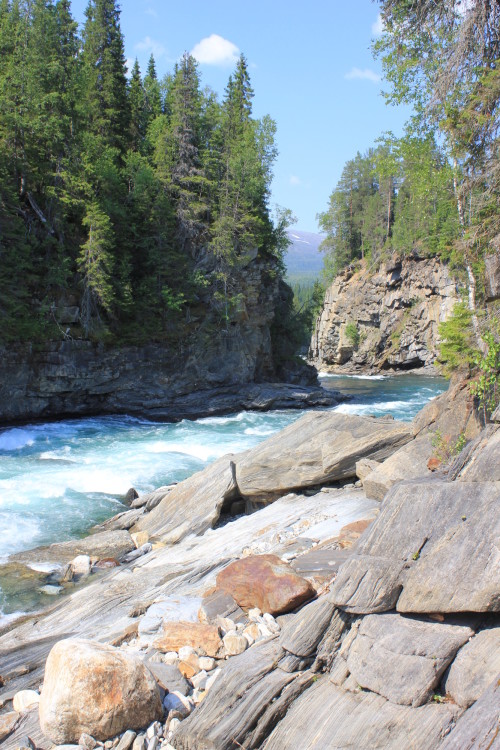
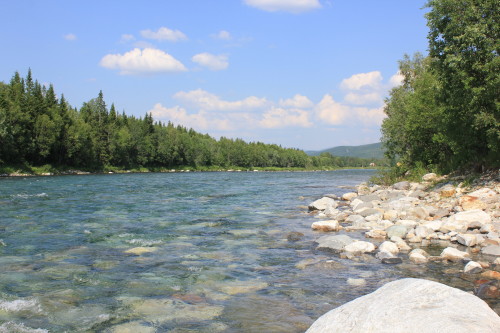
Check HERE for information about fishingrules and -management

